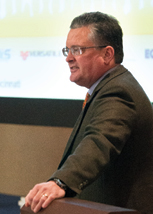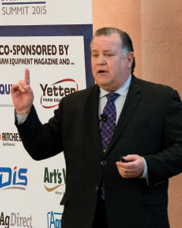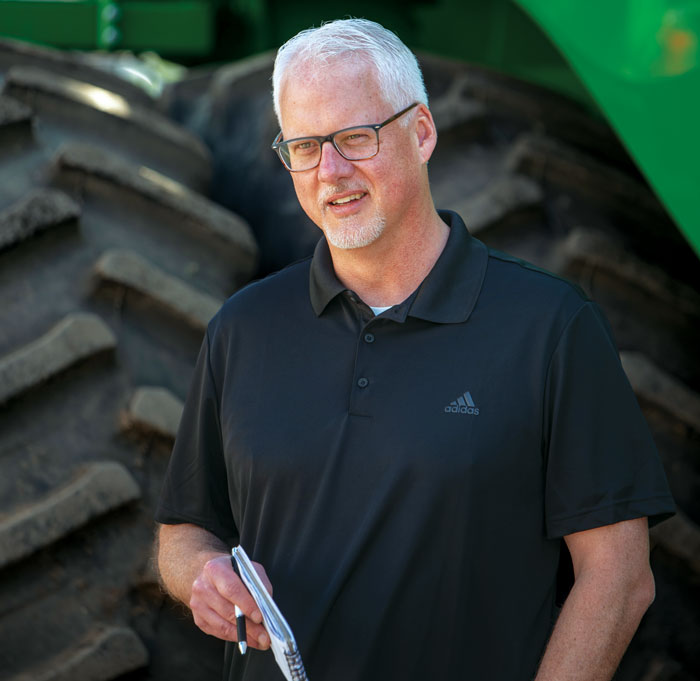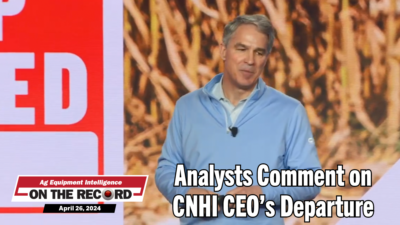“When we talk about sources of capital, there are numerous articles on how to define, access and source it,” says Mast. “We boil it down into two components: internal and external. By understanding both sides, you are positioning you and the next generation while also showing your ability to enhance the valuation of your business.”
Internal Sources
Retention of Earnings – “The easiest and lowest hanging fruit is a profitable business where you don’t send all the money out the door at the end of the year,” Mast says. “You have a system with your budgets, your expense allocations and your capital expenditures that says ‘Before we distribute earnings, we go ahead and we identify these specific projects where we can at least fund a portion of it with the earnings retained.’”
Monetization of Depreciated/Undervalued Fixed Assets –“There’s an opportunity to monetize certain fixed assets, that may or may not be depreciated on your books, yet may still contain some value,” Mast says. “We know of circumstances where commercial real estate institutional investors are looking to reacquire well-invested, well-kept existing properties. Or alternatively, become a landlord in a new building which, by so doing, requires no cash out of the pocket for the dealer. If you have a separate business under your umbrella that offers no strategic sense and no synergy, you can liquidate it and generate some cash for more strategic purposes.”
Conversion of Non-Strategic, Liquid Assets– Mast says that some captives, including his former one (CNH Industrial), offer programs where accounts receivable that fit within certain parameters and guidelines can be eligible for an advance against. “They’re essentially purchased and pulled off the books. Once again, it’s deploying assets that otherwise are non-productive.”
Subordinated Shareholder Loans & Seller Notes– When there’s an opportunity with a dealer principal who may no longer be active in the business or a shareholder who is selling, dealers can structure funding that would have a subordination element to it, says Mast. “This means that it would be viewed by as a portion of equity. It’s a way of generating cash in order to support the business without putting to risk some of your third- party lending relationships. That’s the same for the Personal Guarantees.

Nick Mast (above) and Tom Owen (below), partners with ChannelMasters, spoke at the 2015 Dealership Minds Summit.

Warrants With Earn-Outs– Here, says Mast, a retiring shareholder can take an earn-out provisions on a structure so that there’s no cash actually going out of the business.
External Sources
The other side of the capital sourcing coin is external sources, or those where you go outside the business in order to generate additional funding for the investment opportunity.
As they say in the business,the banker is the guy who has the umbrella for you on the sunny day. “But you need to nurture those relationships because at some point, you’re going to need them,” Mast says. Below are the main points they made on external funding sources.
Strategic Industry Investors — Mast describes this model as the dealer next door you may decide to merge with or form some other type of other strategic joint venture. “We worked on a situation where a couple existing dealers contributed their dealer real estate to a new holding company and received shares in return. They converted the non-productive real estate into a shareholding and a new entity in a non-cash way.”
Adjacent Market Investors — Mast and Owen say that there is more interest from adjacent market investors, which they describe as industries that have similar characteristics, profitability levels and core competencies, but maybe different products. “We use the example of truck dealers,” Mast says. “There’s a public company in Canada who has expanded their core operation in ag and construction equipment and now also expanding into truck dealership. And we’re also seeing the reverse, where a truck dealership with an existing footprint could leverage their fixed asset investment and core competencies in parts and service and fixed operations by installing or integrating an ag dealership.”
Owen adds that the adjacencies can found “closer to home” as well, citing things like center pivot, grain storage and livestock products. He also mentions that dealers near metropolitan areas or in key rural locations where purchasing is done can be interested parties too, citing recreational products, power generation, home power control and anything that requires whole goods, parts, service, fleets, field or at-home maintenance. “A true adjacent market is one that allows you as an enterprise owner to leverage fixed assets to generate higher return without a lot of fixed investment. So while a truck dealer may require a huge investment, other areas might bring in new customer segments.”
Commercial Real Estate Acquirers —Mast says this model is considered as a source of capital when paying a third-party landlord can be less expensive than financing the real estate yourself. “It allows you to redeploy the cash for other more productive assets such as investments in the back of the shop and the aftermarket — which has substantially higher cash flow impact and profitability.”
Owen adds that he and Mast are finding willing investors — even in those current real estate funds. “Say I have to do four new buildings and I don’t want to saddle the next generation with it, and maybe I want to get out from under our current family REITs. We’re finding all sorts of opportunity to talk to folks like that in recapitalization of those REITs for a better return and at lower interest rates.”
OEM Captive Finance Support — There are occasions when there may be a good strategic reason to couple with your OEM capital company. Typically, it’s structured as subordinated debt to the dealer receivables.
Third Party Lenders — These sources are important, says Mast, not only for working capital but also excess collateral valuations. “It may be a good time to take some of the excess collateral you might have in your assets right now and go back to your close relationship with your third party lender to generate additional cash for investment.”
Family Office Professional Investors — This model is interesting, says Mast, as the ultra-wealthy have family offices established all over the world and and hire professional portfolio managers.. “I’d say in the last 3 years, the interest and trends in the ag business created a lot of interest with these people. They typically align themselves with very good managers and very good owners who prefer to retain at least a piece of the ownership because it keeps them interested.
“These are long-term partnering types of relationships; not a quick flip like you might see from some of the other institutional investors. And there’s a lot of them. We know of a few right now that have made investments in ag.”
Private Equity Institutional Investors — This group has a lot of interest in ag as well, say Mast. “They may have adjacent market investments that they want to complement, such as inputs, to invest across the ag value chain. With these people, you want to understand their ultimate goals and objectives because it may be a little bit unaligned with what you have in mind.”
Owen acknowledges that OEMs are nervous about a private investment company coming in, buying out a dealer and doing it for the flip in 4-7 years. “But we’ve talked to a number of institutional investors that are ripe for the ag and construction equipment, material handling and trucks. And these guys are looking for smaller investments overall where known leadership will stay on through the next generation. And they’re willing to put their money to work now to help that next generation, as well as the current generation unfold some of that wealth.
“It can start the transition where it’s equitable on all sides and isn’t designed to be permanent, but handles it in a way that doesn’t put but a bunch of pressure on that new leader until those earnings are there for the buying out. We know some of these guys want to stay in beyond 7-10 years because they like the growth and the consolidation aspect.”







Post a comment
Report Abusive Comment